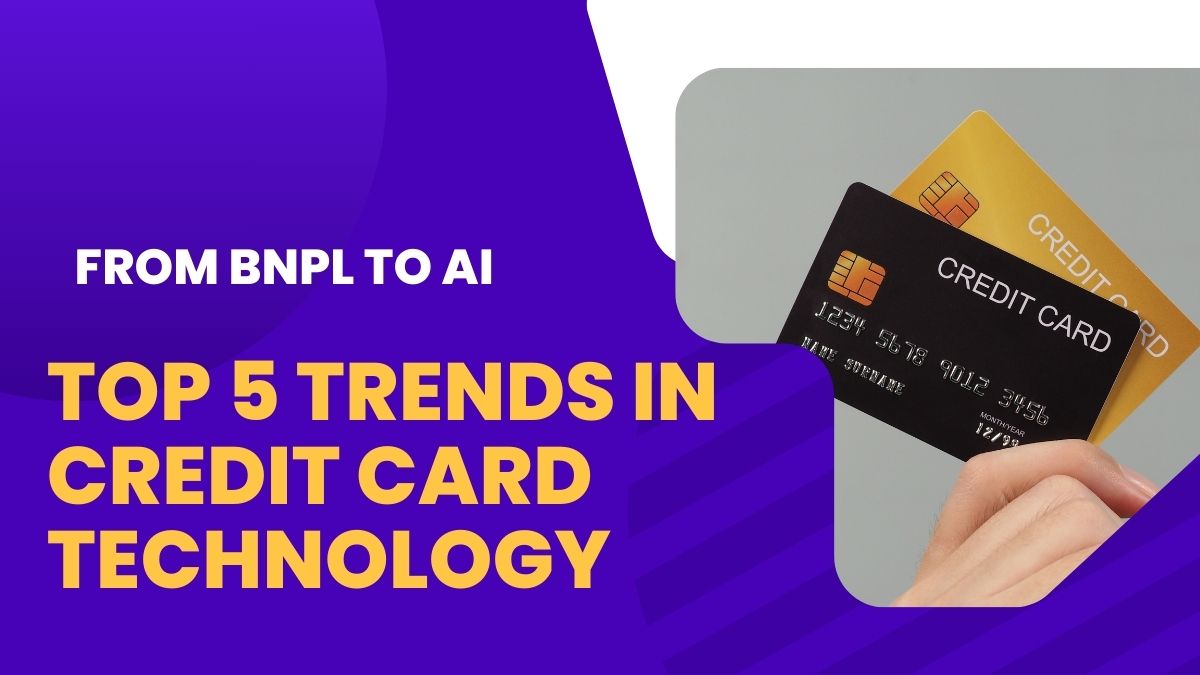The landscape of credit card technology is evolving at an unprecedented pace, driven by advancements in artificial intelligence (AI), consumer behavior shifts, and emerging financial technologies. As we navigate this dynamic environment, it becomes crucial for consumers and businesses alike to stay informed about the latest trends shaping the future of credit cards. In this article, we will explore the top five trends that are redefining credit card technology, providing insights into what you need to know to remain competitive and savvy in the financial arena.
1. The Rise of Buy Now, Pay Later (BNPL) Solutions
In recent years, Buy Now, Pay Later (BNPL) solutions have gained immense popularity among consumers, revolutionizing the way people approach credit. This payment option allows consumers to make purchases immediately while deferring payments over time, often without incurring interest fees.
BNPL services are particularly appealing to younger generations who prefer flexible payment plans that fit their financial situations. Companies like Afterpay, Klarna, and Affirm have surged in popularity, integrating seamlessly with e-commerce platforms to enhance the shopping experience.
As BNPL continues to grow, credit card companies are adapting by incorporating similar features into their offerings. Traditional credit cards are beginning to offer BNPL options, allowing consumers to pay for purchases in installments directly through their existing accounts. This trend reflects a broader shift toward personalized and flexible financing solutions that cater to individual spending habits and preferences.
2. Enhanced Security with Contactless Payments
As digital payments become the norm, the demand for contactless payment solutions has surged. Consumers are increasingly seeking convenience and safety in their transactions, particularly in the wake of the global pandemic.
Contactless credit cards, equipped with Near Field Communication (NFC) technology, enable users to make transactions simply by tapping their cards against a compatible terminal. This method not only speeds up the checkout process but also minimizes contact, aligning with health and safety protocols.
Moreover, advancements in biometric authentication, such as fingerprint recognition and facial recognition, are further enhancing the security of contactless payments. These technologies significantly reduce the risk of fraud, making consumers feel more secure in their transactions. As contactless payments become more mainstream, we can expect further innovations to enhance user experience and security in the credit card industry.
3. Artificial Intelligence and Machine Learning in Fraud Detection
Artificial intelligence (AI) and machine learning are at the forefront of transforming credit card technology, particularly in the realm of fraud detection. Traditional fraud detection methods often rely on static algorithms that can be easily bypassed by sophisticated fraudsters.
However, AI-driven solutions are capable of analyzing vast amounts of transaction data in real time, identifying patterns, and flagging suspicious activities more accurately than ever before. By leveraging machine learning, these systems continuously improve their detection capabilities, adapting to new fraud tactics and minimizing false positives.
Credit card issuers are increasingly adopting AI technologies to enhance their security measures, providing customers with greater peace of mind. As these technologies continue to evolve, we can expect even more robust defenses against fraudulent activities in the credit card space.
4. Integration of Mobile Wallets and Digital Payment Platforms
The integration of mobile wallets and digital payment platforms into credit card technology is another significant trend reshaping the financial landscape. Mobile wallets, such as Apple Pay, Google Pay, and Samsung Pay, allow users to store their credit card information securely on their smartphones, enabling seamless transactions both in-store and online.
This integration not only simplifies the payment process but also enhances security through tokenization, which replaces sensitive card information with unique identifiers. As more consumers adopt mobile wallets, credit card companies are partnering with these platforms to provide additional benefits, such as loyalty rewards and personalized offers.
Furthermore, the rise of peer-to-peer (P2P) payment services, like Venmo and Cash App, is changing how consumers view credit and debit transactions. As P2P payments become more popular, traditional credit card companies are adapting by incorporating similar features into their apps, enhancing their value proposition to users.
5. Sustainability and Eco-Friendly Credit Cards
With growing concerns about the environmental impact of consumerism, sustainability has become a crucial consideration in credit card technology. Consumers are increasingly looking for eco-friendly credit card options that align with their values and support environmental initiatives.
Credit card companies are responding by offering cards made from recycled materials, as well as implementing carbon offset programs. Some issuers have introduced rewards programs that allow customers to earn points for eco-friendly purchases or donations to environmental causes.
Additionally, advancements in digital banking are promoting sustainable practices by reducing the need for physical card production and minimizing paper waste associated with statements and billing. As awareness of sustainability continues to rise, credit card companies that prioritize eco-friendly initiatives will likely gain a competitive edge in the marketplace.
Conclusion
As we have explored, the credit card technology landscape is rapidly evolving, driven by innovations such as BNPL solutions, contactless payments, AI-powered fraud detection, mobile wallet integration, and sustainability initiatives. Staying abreast of these trends is essential for consumers and businesses alike, ensuring they make informed decisions in an increasingly digital and competitive environment.
By understanding these advancements, consumers can leverage new financial tools to enhance their purchasing power, while businesses can adapt to the changing expectations of their customers, ultimately driving growth and success in the credit card industry.
Read More:- Best Home Loans and Interest Rates in India for 2024

